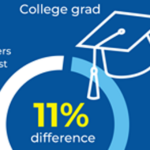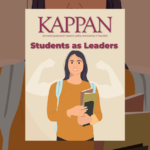 The new Common Core writing exams may use computer algorithms to assess student work.
The new Common Core writing exams may use computer algorithms to assess student work.
Last year, I presented several professional development workshops on the Common Core State Standards to school districts across Illinois. Inevitably, we arrive at the Core’s writing standards, and we discuss the new writing requirements for the PARCC Assessment (Partnership for Assessment and Readiness for College and Careers) that is being implemented this year throughout Illinois and relies heavily on a student’s ability to argue effectively in writing.
To put it bluntly, writing assessment has a checkered past in Illinois. In 2005, state officials eliminated the writing test to save $6 million (Rado, 2005), becoming the only state to eliminate standardized assessment of writing for students along with the social studies test. The state was also under pressure to meet the No Child Left Behind federal mandates for reading and mathematics but not necessarily for writing. Lawmakers like State Sen. Miguel del Valle (D-Chicago) led efforts to reinstate the writing test in 2006 along with a $2 million appropriation for designing a new writing assessment. However, in 2010, Illinois eventually eliminated the writing tests for 3rd, 5th, 6th, and 8th grades in order to save just $3.5 million dollars, even though only 54% of 5th graders had mastered the writing standards in 2009, and students performed worse on the standardized writing tests than the reading and math tests (Rado, 2010). The 11th-grade writing test was kept intact for the sake of college entrance requirements.
As colleges were demanding better writing skills from incoming students, Illinois was eliminating writing assessments across the state, even though college-bound students still had to be assessed on writing when they took the ACT and SAT. Multiple choice test questions, such as those on the ACT Writing Test, can measure students’ understanding of writing conventions. But these tests do not align with what will be expected of students in college where they will need to write well-crafted academic essays.
Yet the reliability of assessing student essays by humans also can be questioned, which is why states use multiple human scorers to ensure reliability — also called inter-rater reliability — on standardized writing tests. This adds significant costs. In the 1990s, each writing sample from just one student was assessed by at least three professionals in order to ensure inter-rater reliability. These professionals needed to be housed in hotels for several days as they evaluated thousands of writing samples over hundreds of hours and across several grades in order to ensure fairness, equity, and reliability — all on an hourly basis. As they combed through writing samples, they measured a student’s authorial voice, sense of organization, ideas, creativity, and use of conventions in order to provide a final quantitative score.
Reliability scores between algorithms and human scorers is adequate enough to move forward with computerized testing, but it definitely is not the ideal method.
Enter the algorithm
Today states rely on computer technology to assess student writing. Instead of writing, erasing, and rewriting on a piece of paper with a pencil, students are required to write into a text box that lets them check for spelling, grammar, and word choice while they are writing responses. Word-processing skills are required.
The National Assessment of Educational Progress (NAEP) was one of the first large-scale organizations to switch to the computerized testing of writing for the 8th- and 12th-grade assessments (Cavanagh, 2007). However, the NAEP continues to use human beings to holistically score the timed, computerized writing samples, just as the ACT asks English faculty to assess the computerized student writing (Matzen & Hoyt, 2004).
Here is where the road forks and the new Common Core writing assessments may move away from solely human scoring and judgment to machine scoring — a practice that will reach fruition as the PARCC and Smarter Balanced assessments are rolled out. The new Common Core assessments will use a hybrid approach to scoring that includes scoring by both machines and humans. While that may come as a surprise to many, such algorithms already are in widespread use in our lives, from web searching to marketing to stock trading. Computers are using if/then hypothetical rules or algorithms to determine which coupons retailers such as Target should send in the mail based on your past purchases. Amazon tells us what to read next using algorithms. Dating web sites tell us who we should ask out. Cars use algorithms to prevent accidents. Law enforcement uses algorithms to fight crime in big cities. Twitter uses trending algorithms to tell us what is popular right now.
All of these algorithms are used to sort, examine, and measure Big Data, producing a world in which people increasingly rely on data to make minor and major decisions without much consideration for other contextual factors. Big Data will be generated next year as millions of students are assessed on their writing abilities as measured by Common Core standards, and this exponential expansion of information will be coupled with “new, cheap, and user-friendly technological devices that permit the efficient collection, management, and use of such massive amounts of data” (Kosciejew, 2013, p. 52)
Algorithms are mathematical formulas that take the language in a student’s essay and analyze it from a statistical perspective. Words and their meanings as well as the meaning of the text as a whole are analyzed mathematically by continuously examining the semantic relationship between the words in the essay and the essay as a whole structure. An algorithm compares units of information within the essay (sentence, paragraph, summary, or whole text) with adjoining units of the text to determine the degree to which they are semantically related. Latent semantic analysis (LSA) is a computational linguistic model that measures the similarity between two pieces of text with the cosine between the two vectors: “Thus, if the cosine is near 1, the two pieces of text are very similar semantically, and if the cosine is near 0, the two pieces are not semantically related at all” (Olmos et al., 2009, p. 946). Many argue that LSA is closer to the human cognitive dynamic processing of texts than we assume since teachers are constantly comparing the student’s essay in hand with a stellar example of that essay assignment from another student — therefore measuring semantic similarity.
Algorithms vs. humans
At the same time, newer algorithms continue to replace traditional algorithms like LSA, and the type of discourse process being asked of the student in the writing assignment matters immensely. For example, if the student is asked to summarize the reading passage, then the algorithm is measuring the synthesis and coherence of ideas. On the other hand, writing short-answer responses to isolated questions is a much easier discourse to assess since the algorithm is measuring the use of targeted words. However, if students were asked to write open-ended essays instead of summaries, applying what they had read to a new situation, the resulting essays might be expected to be less similar than the summaries to the original text. In addition, we would expect less similarity across students, and we might not expect the level of similarity to predict essay quality. In other words, LSA may not be appropriate in open-ended essay questions. The best bet is to match the individual student’s essay to a pool of essays that human scorers have already judged to be excellent.
Research studies have been conducted on the reliability of scores from an LSA algorithm versus human scorers and the reliability between human scorers. Often, there is higher correlation between human scorers. But research also finds the reliability scores between LSA algorithms and human scorers adequate enough to move forward with computerized testing though it definitely is not the ideal method. In addition, some algorithms are more reliable than others. Some algorithms may be better suited for assessing narrative writing than expository writing due to the differences in cognitive demand between these discourse types. Synthesizing a summary from an expository text is inherently different from synthesizing the characters and plot for a narrative writing task. According to research, the LSA algorithm is more reliable on essays of more than 60 words; it encounters particular difficulties in the two- to 60-word range (Wiemer-Hastings, Wiemer-Hastings, & Graesser, 1999).
Polysemy and other challenges
Algorithms also vary in efficiency depending on whether they are analyzing a student’s writing holistically or whether the algorithm is analyzing various components within a text, which is referred to as the componential method that examines multiple features in a student’s writing. A holistic method of assessment, on the other hand, uses the cosine measure to determine the semantic relationship between the student’s writing against the text holistically as well as perhaps measuring the student’s writing against an expert essay or “golden” essay, which is created from a pool of 100 high-scoring essays previously graded by human scorers. The higher the cosine score, the higher the semantic relationship between the student’s writing and the original text itself.
We can all agree that algorithms have gotten better over the decades, which is why high-stakes tests such as the ACT, SAT, and now the PARCC are using the computerized testing of writing. W. Kintsch’s (2001) study describing the prediction algorithm, which makes the language used in a student essay more context dependent, shows that the prediction algorithm is improving the polysemy problem inherent in LSA. (Polysemy refers to the idea that a word like “bank” has multiple meanings — a river bank as opposed to a money bank — and the prediction algorithm is trying to use statistical analysis to determine which “bank” is being referred to in the student’s writing.) Many English words have multiple meanings, and the algorithm must predict the correct meaning based on context. For example, when the student writes “the store owner is a shark,” the algorithm has to make predictions with words like aggressive, predatory, and tenacious, as opposed to words like fish, ocean, and fins, which are literal referents. Sharks and store owners also do not have an established semantic network in the English lexicon, and therefore the semantic link is unique to the individual student. Metaphorical extensions and colloquial phrases such as “nerves of steel” therefore are more challenging for an algorithm to make correct predictions since they might not be context-dependent.
How do you hold an algorithm responsible?
One can conclude that anomalous writing in general would not benefit from being assessed by algorithms. Educators also doubt whether an algorithm can read paragraphs, process sentences in their entirety, reason with flexibility, and understand tricky language the way humans can. Therefore, an algorithm must be expansive enough to capture a wide range of semantic relationships between words and their meanings and in unique contexts — otherwise known as increasing its semantic memory. Mathematically, more terms must be added to the cosine vector so that instead of 50 target “lemmatized” words the algorithm now looks for 75 lemmatized words with strong links in meaning to the original text. (Lemmatization is the algorithmic process of determining the lemma for a given word. For example, in English, the noun “night” may appear as “night,” “nightly,” “nightingale,” etc. The base form, “night,” is called the lemma.)
Effect on scores
School administrators are concerned with how the computerized writing testing will affect overall school scores, whether they have the equipment and space to even assess all students using computerized testing and whether accommodations such as extended time can benefit student writing scores. The ratio of students to computers is closer to 3-to-1 at the national level, and access to fast wireless services may not be possible for all. At the same time, school administrators are happy that student writing can be assessed instantly when it is computerized. What’s more, there are inherent gaps between students who have access to technology at home versus those who still do not, possibly widening the academic gap even further between student populations.
Colleges are already using computerized software to let students write their essays, submit their essays, receive their grade immediately, and then choose to rewrite the essay based on the grade. EdX, a writing assessment software company developed by Harvard and MIT engineers, uses artificial intelligence to evaluate essays and provide immediate feedback (Markoff, 2013). EdX has human scorers first evaluate 100 essays on a topic, then creates a pool of high-scoring essays, and finally evaluates incoming essays against this pool using algorithms. Students can choose to continually rewrite their essay and not wait weeks for feedback from their professors — almost making it into a game of perfection. Students often want and need instant feedback on their writing, but EdX offers mostly general feedback, such as whether the student was on target and on topic.
Many states, such as West Virginia and Indiana, are starting to incorporate the automated assessment of writing in their secondary schools. Yet how reliable and specific is the machine feedback? Les Perlman, a former writing director and current researcher at MIT, claims the software is not reliable, and he has started a group of MIT educators — including Noam Chomsky — who oppose machine scoring of student writing because, they maintain, computers cannot read and reason like human beings.
Computers cannot look at the evidence in the writing and make good sense of it. Computers cannot determine if the arguments the student poses are convincing. Computers cannot determine whether the student essay is truthful and clear in its language. When it comes to high-stakes testing and writing assessment, PARCC may need to brace itself for opposition and maybe even lawsuits. There will be social and political consequences for allowing computers to automatically grade student essays. Yet how do you hold an algorithm responsible? If we erect algorithms as our ultimate judges and arbiters, we face the threat of difficulties not only in enforcement but also in culture. At the same time, human scorers take too much time to assess writing and cost much more.
Outsourcing humans
Deep in our hearts, there is also the growing hysteria that educators will be outsourced by algorithms. The National Council of Teachers of English has rejected the computerized assessment of writing because “machines cannot judge some of the most valuable aspects of good writing . . . including logic, clarity, accuracy, style, persuasiveness, humor, and irony” (Berrett, 2013, p. 2). Creative exercises that require imagination may not be analyzed correctly by a machine since it cannot provide feedback on rhetorical choices and many aspects of style. Therefore, machine grading is argued to be superficial with a focus on mechanics over meaning. Algorithms can only assess the complexity of word choice, the variety of sentence construction, the rhetorical dimensions of an essay, including the presence of evidence, and the syntax used in simple argument. If teachers do teach to the Common Core writing test, then, dissenters contend, the scripted writing curriculum will emphasize mostly mechanical forms of writing: a correct number of paragraphs, use of transition words, intact thesis statements, three main details, parallel constructions — “this is what they said” and “this is what I say” —and the use of supporting quotes from authority figures.
The PARCC Writing Rubric for Grades 6-11 has these evaluation criteria: comprehension of key ideas and details, development of ideas, organization, clarity of language, and knowledge of language and conventions. Nowhere can one find a criterion that assesses the student’s authorial voice or writing style. In order to receive the highest grade using the PARCC writing rubric, the student must cite specific details from the text itself, use domain-specific vocabulary, develop coherent paragraphs, and show grammar usage — all of which can be evaluated easily with an algorithm. What is lost are original ideas in writing that carry conversations, engage in debate, play with words, and pose questions that have not been asked.
Heads down
At the same time, the question of validity has been challenged by others like Marc Bousquet, a blog writer for The Chronicle of Higher Education, who argues that machines can score essays well because so much of human scoring is also mechanical (2012): “It’s reasonable to say that the forms of writing successfully scored by machines are already-mechanized forms — writing designed to be mechanically produced by students, mechanically reviewed by parents and teachers, and then, once transmuted into grades and the sorting of the workforce, quickly recycled.”
Supporters of machine grading say human graders are not necessarily spending large amounts of time giving meaningful feedback to students on their writing and that human graders are not always invested in the student’s academic success. Upon reflection, I think back to 2004 when I was a part-time evaluator for the state of Illinois and was housed in a hotel for several days where I quickly scanned thousands of students’ writing, knowing I was overlooking individualized aspects of each student’s writing style, grading robotically with a mass of others like me — all with our heads down.
References
Berrett, D. (2013, May 3). English teachers reject use of robots to grade student writing. The Chronicle of Higher Education. http://chronicle.com/article/English-Teachers-Reject-Use-of/139029/
Bousquet, M. (2012, April 18). Robots are grading your papers! The Chronicle of Higher Education. https://chronicle.com/blogs/brainstorm/robots-are-grading-your-papers/45833
Cavanagh, S. (2007, May 9). On writing tests, computers slowly making mark. Education Week, 26 (36), 1-10.
Kintsch, W. (2001). Predication. Cognitive Science, 25, 173-202.
Kosciejew, M. (2013). The era of big data. Feliciter, 59 (4), 52-55.
Markoff, J. (2013, April 4). Essay-grading software offers professors a break. The New York Times. www.nytimes.com/2012/06/10/business/essay-grading-software-as-teachers-aide-digital-domain.html
Matzen, R.N. & Hoyt, J.E. (2004). Basic writing placement with holistically scored essays. Journal of Developmental Education, 28 (1), 2-4.
Olmos, R., León, J., Jorge-Botana, G., & Escudero, I. (2009). New algorithms assessing short summaries in expository texts using latent semantic analysis. Behavior Research Methods, 41 (3), 944-950.
Rado, D. (2005, March 11). Illinois cuts testing on 1 of 3 R’s. The Chicago Tribune. http://articles.chicagotribune.com/2005-03-11/news/0503110251_1_tests-writing-11th-graders
Rado, D. (2010, October 18). New ISAT lets kids pass with more wrong answers. The Chicago Tribune. http://articles.chicagotribune.com/2010-10-18/news/ct-met-isat-answers-20101018_1_math-tests-new-isat-wrong-answers/2
Wiemer-Hastings, P., Wiemer-Hastings, K., & Graesser, A. (1999). How latent is latent semantic analysis? Proceedings of the Sixteenth International Joint Congress on Artificial Intelligence (pp. 932-937). San Francisco, CA: Morgan Kaufmann.
CITATION: Hadi-Tabassum, S. (2014). Can computers make the grade in writing exams? Phi Delta Kappan, 96 (3), 26-31.
ABOUT THE AUTHOR

Samina Hadi-Tabassum
SAMINA HADI-TABASSUM is an associate professor of education and director of the bilingual/ESL program at Dominican University, River Forest, Ill.










